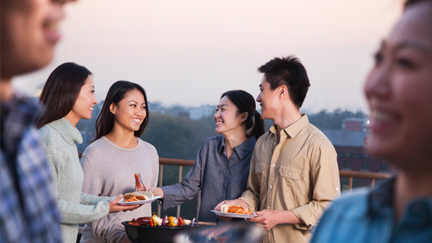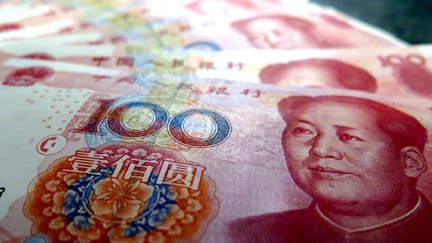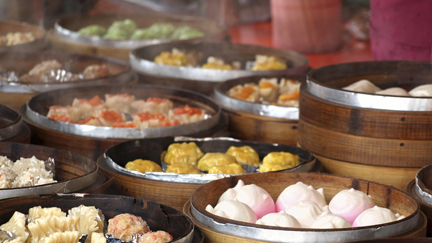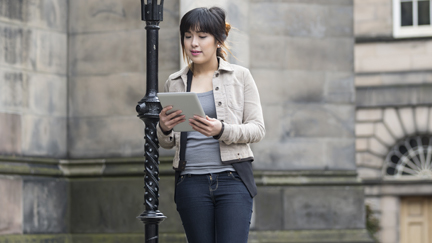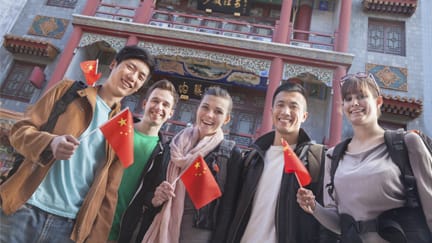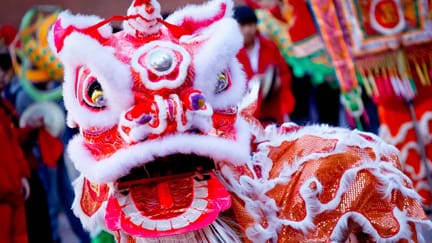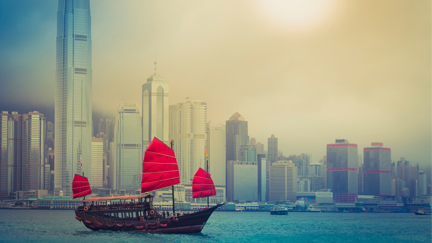China Travel Guide
“Wherever you go, go with all your heart”– Confucius
China is a country of diversity and extremes. As the world's most populous state (home to over 1.38 billion people), you can experience different worlds entirely depending on where your feet are planted. Electric energy and human innovation climb as high as the eye can see in Shanghai, but travel 2,900km west and you reach Tiger Leaping Gorge with unmatched hiking panoramas.
-
Before You Go -
Tourism -
Places to Visit -
Cities to See -
Blog -
Packing Tips -
Helpful Links
China has a rich cultural background, with 5,000 years of recorded history! For thousands of years, the nation lived in relative isolation, passing from one monarch to the next. One of the most famous ruling families is the Qin Dynasty, which gifted the world with the Great Wall of China and The Terracotta Army. As much as it is a beacon of ancient history, China continues to adapt to the modern world. Highways are built everyday, traditions are re-written, socio-economic reforms are implemented. Travellers will not only find a gateway to the past, but catch a glimpse of the future. To visit China, you should know the top things to see, the best times to visit, and what forms of Visas may be required. When you feel ready for the trip of a lifetime, compare cheap flights to China and go with all your heart.
Get Email Travel Deals
Sign up for our emails to receive travel deals, news, contests and special offers.
(You can opt out at any time.)
5 Things to Know Before You Visit China
Language
The official language of China is Standard Mandarin, which has origins in Beijing. However, China does have several autonomous regions, such as Hong Kong and Macau, with official languages that differ from the mainland, like Cantonese or English. StudentUniverse Tip: When taking a taxi, make sure you have the name of your destination written down in Chinese characters for your driver. While Chinese dialects are spoken differently, the written language stays the same.
Currency & Tipping
The national currency of China is the yuan, or renminbi (literally translating to “the people’s currency”). ATM machines are everywhere and they usually dispense 100RMB bills. Credit cards are only used in hotels or large restaurants and stores, so be mindful of how much cash you have on hand. Make sure you always tip those in the hospitality or travel business, such as hired drivers or your tour guide. They rely on tipping for their income. StudentUniverse Tip: Many establishments have a no-tipping policy (such as restaurants and massage studios)—make sure you do not tip in these places because it can be seen as impolite.
Chinese Cuisine
Throw out all of your take-out-menu notions of Chinese food, the real thing is far from any western impersonation! The "Eight Culinary Cuisines" of China are Anhui, Cantonese, Fujian, Hunan, Jiangsu, Shandong, Sichuan, and Zhejiang cuisines. Each region has its own flavor and specialties. Make sure you try the sweet and sour pork, wontons, dumplings, chow mein, spring rolls, and of course the infamous Peking roasted duck straight in origin from the kitchens of Beijing (and one of China’s national dishes).
How to Dress in China
You may notice that styles tend to be more conservative in China, but this is not related to any explicit social or religious rule. On the beach you will find bikinis somewhat uncommon, and when you go out at night the hemlines do not run high. That being said, you will find plenty of bold fashion choices in cities like Shanghai and Beijing. Overall, be aware of your surroundings and make sure your clothes are clean and appropriate for wherever you’re headed, and you should not offend anyone. StudentUniverse Tip: The people of China love the color red, as they believe it symbolizes luck and fortune—you will find it everywhere during the Spring Festival each year!
Cultural Differences
Some everyday cultural differences may surprise foreigners, so it is best to address them before crossing borders: smoking is common in public places (including restaurants), spitting in the street is not considered disrespectful or rude in any way, and if you are visiting a house or acquaintance it is customary to bring a small gift—do not come empty handed! Travelling in China is a learning experience, so don’t panic over each and every mistake.
Tourism in China
When is the best time to visit China?
Like the United States, China experiences a diverse climate that differs between each region. The northeast has bitterly chilly winters and hot and dry summers, while the southeastern region experiences a milder winter, but has semi-tropical summers that occasionally exceed 100d, and so on. Tourists tend to visit in early fall or spring, when the seasons are gentler in general, but the highest tourism season is still summer. Avoid travelling June through September if possible. After the first week of October (with Chinese National Day), travelling in China should get easier, as the crowds start to ease up and the prices of attractions, transport, and hotels go back to normal. Book strategically for the best deal on flights.
Is it safe to travel to China?
Crime against foreigners, especially violent crime, is very rare. Most people you meet will be friendly and honest. Petty crime, like pickpocketing, does occur, so keep your wallet hidden and be smart about where you leave your valuables. China is a very safe country, but as with any destination, make sure you know your phone numbers:
- Police: 110
- First-aid Ambulance: 120
- United States Embassy of Beijing: 10-8531-4000
- Consulate General of the United States Shanghai: 21-3217-4650
Places to Visit in China
China boasts jurisdiction over 22 provinces, 7 regions, and 4 municipalities. Where will your China travel plans start?
The Forbidden City
In the heart of Beijing sits the Forbidden City—the largest and most exquisitely preserved palace complex in the entire world. The imperial palace not only housed emperors and their families, but served as the ceremonial center of Chinese politics from 1420–1912. “The Gate of Heavenly Peace,” an iconic monument featuring Mao Zedong's portrait, separates Tiananmen square from the Forbidden City. The site is operated today by the Palace Museum.
The Great Wall of China
Taking over 1800 years to build, you would be insane to visit China without experiencing one of the world’s greatest, oldest, largest, and most celebrated wonders.
Yangzi River Cruise
China’s largest river is the third largest in the world (surpassed only by the Nile and the Amazon), but could easily be ranked #1 for its outstanding views. Enjoy the stunning scenery of the Three Gorges while traveling through ancient sites.
Mt Kailash, Western Tibet
Its Sanskrit name, Kailasa, is derived from a word meaning “crystal” which suits this holy mountain well. The site is sacred to four religions: Bön, Buddhism, Hinduism and Jainism. StudentUniverse Tip: Travelling to Tibet requires special permits, and to visit Mt Kailash you will have to travel with a government-approved tour.
Terracotta Warriors
Discovered by local farmers in 1972, this clay army of over 8,000 soldiers and nearly 700 horses protects the tomb of Emperor Qin Shi Huang (d. 210 BCE). Visit the necropolis and view each unique face, individually carved and perfectly preserved for centuries.
Kining Longji Rice Terraces
If you love photography, hiking, or one-of-a-kind breathtaking views you absolutely can’t miss the Kining Longji (Dragon’s Backbone) terraces. Just Google it, trust us!
Cities to See in China
China is one of the world’s largest countries, claiming 3½ million square miles of land, so planning a trip can seem overwhelming. Breaking it up into key cities, like the ones listed here, can definitely help. Pick your favorite spots, and string them together in an unforgettable adventure!
Beijing
Beijing is China’s political, cultural, and educational capital. Thousands of cultural sites are scattered among the 5 city districts and 11 outer districts, so it’s a great place to start your China travel. The international metropolis was home to the 2008 Summer Olympics, and is set to host the 2022 Winter Olympics as well. Beijing is known for its traditional dining and Chinese Operas, and should be on every traveller’s bucket list.
Shanghai
Shanghai is celebrated as the most developed and populous city in mainland China. With an iconic cityscape illuminated throughout the night, economic weight, and international influences, Shanghai is often compared to New York City. As one of the country’s busiest transportation hubs, Shanghai is an easy pit stop while travelling in China.
Xi’an
Xi’an is not only home to the famous Terracotta Warriors, but also the Big Wild Goose Pagoda, the Xi'an Botanical Garden, and the scenic Qujiang Pool Park. This diverse city once served as the eastern end of the Silk Road, and housed several ancient dynasties. Now the capital of the Shaanxi province, Xi'an has become a must-see city for travellers and heads of state alike, who come to bike around the city wall or visit the Muslim Quarter.
Nanjing
Nanjing is the former capital of China, where the Kuomintang ruled until their 1949 retreat to Taiwan. Its political palaces, cultural museums and Purple Mountain mausoleums make Nanjing a history buff’s dream, but it has something for everyone. International students and the local expat community frequent Nanjing’s affordable bars and there’s plenty of shopping opportunity with Xinjiekou fashion district and Chaotiangong Antique Market.
Guilin
Guilin rests on the Li River in southern china, with its ethereal landscape of limestone mountains and iconic Longji Rice terraces. If you like hiking, this is one of the best places to visit in China. Located in the Guangxi Zhuang Autonomous Region, Guilin has a unique geography, culture and ethnic history. Grab a local snack, like Water Chestnut Cake (also known as Horse Hoof cake) and explore their numerous street markets.
China Blog Posts
Bangkok on a Budget
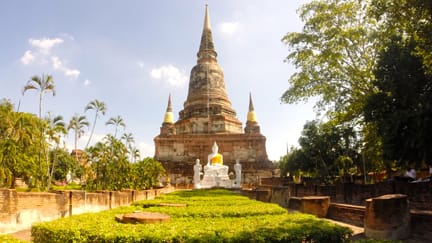
Bangkok, Thailand is not like most major cities. You can experience Bangkok on a budget—this is how to do it.
Packing Tips for China
Get the right bag. Rolling suitcases work well in most cities, but try using something in a bright color or print, which will be easier to spot in a crowded Beijing airport. Soft luggage could be more useful depending on how you travel—there’s nothing worse than trying to stuff a hard-shell suitcase under your train seat.
Mind your paperwork. Especially with the language barrier, it’s best to have hard copies of everything you might need while travelling in China. Print your passport, your visa, your tickets, your hotel information (in english and chinese) and bring a couple maps. Paperwork is the lightest and often most useful tool to have on hand. StudentUniverse Tip: Go one step further and put that paperwork in a plastic ziplock bag. The only thing harder than deciphering a Chinese map? Reading a Chinese map that’s been caught in the rain.
Think ahead. Over the past few years, China has definitely become more expat-friendly, but it’s good to know what you getting into. Many foreigners complain about shopping for clothes, which generally run smaller in the Asian market. Extra tall pants or a size 11 shoe exist, but are going to be tough to track down. Tampons can also be tricky to find, and if you have a favorite deodorant or you’re particular about makeup, definitely bring your own.
BYOTP. Every China travel guide will tell you to leave some space in your day bag for toilet paper or tissues (both of which can be purchased at any Chinese convenience store). It’s only sometimes provided in public restrooms, and rarely replenished.
